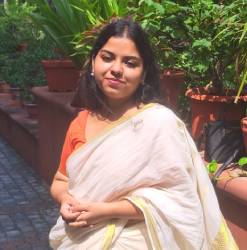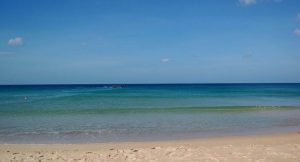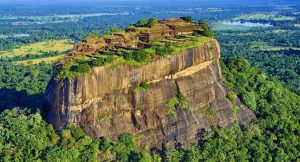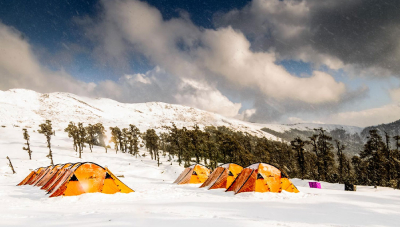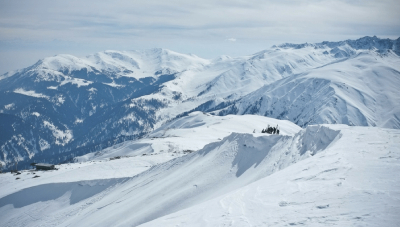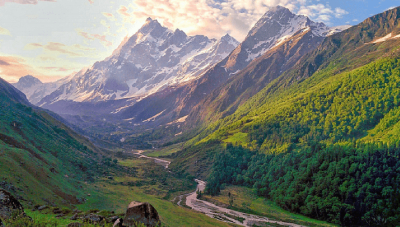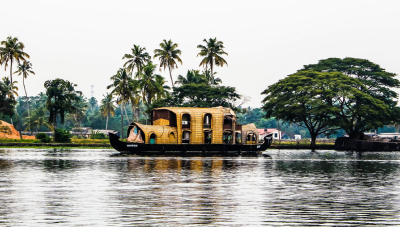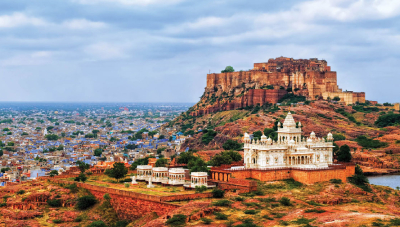Formed in 2019, Ladakh is a union territory of India that came into being after the state of Jammu and Kashmir was divided into 2 union territories namely, Jammu and Kashmir, and Ladakh. The region is a cold desert consisting of mountains, valleys, and rivers of its own. Located at a high altitude, Ladakh also has some of the world’s highest motorable passes, loved especially by tourists who choose to bike all the way to Ladakh. Apart from biking among the cold passes, Ladakh is also known for its many scenic & adventurous treks. Ladakh offers one of the best treks in the country, with amazing views, unique experiences and a memory for a lifetime. The landscape of Ladakh has been cherished by trekkers for years now and is also a popular destination for tourists to explore. Trekking along the high mountain passes and ice-cold rivers can be fun but it is also important to acclimatize yourself with the newer altitude of Ladakh, which is why it is recommended to spend a couple of days prior to your trek sightseeing in the city of Leh. Places you can explore in Leh include the Leh Palace, Shanti Stupa, and the Leh Bazaar.
Top 6 Treks to Experience in Ladakh That Will Amaze You for a Lifetime
- Snow Leopard Trek
- Sham Valley Trek
- Markha Valley Trek
- Chadar Trek
- Nubra Valley Trek
- Southern Zanskar Trek
Snow Leopard Trek
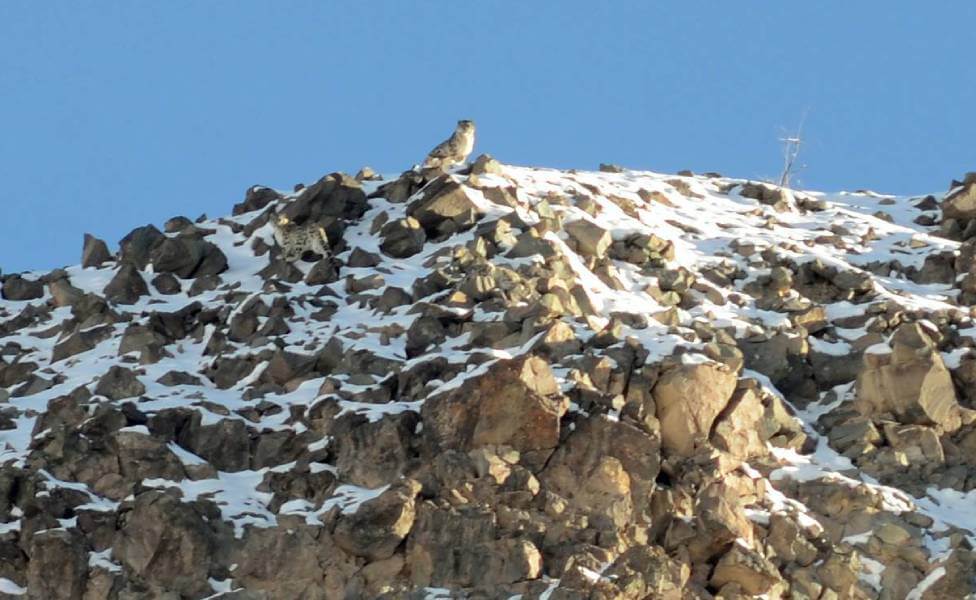
The Snow Leopard Trek is taken mainly by wildlife and nature enthusiasts alike who come to this valley in Ladakh, especially to observe the snow leopard in its natural habitat. The trek is conducted in the Rumbak Valley and is one of the more popular treks in Ladakh. Rumbak Valley is located within the Hemis National Park at Ladakh, and houses many high-altitude animals such as pika, blue sheep, golden eagle, asiatic ibex, and the ladakh urial apart from the snow leopard. At temperatures below 0°C, along with the short and steep slopes of Rumbak, spotting the wild cat can be a feat hard to accomplish. Unlike other cats, leopards are constantly on the move in search of prey and therefore can be hard to spot on the trek. At an altitude of more than 13,000 ft. one needs to not only have proper trekking skills but also lots of luck and patience, due to the nomadic lifestyle of the snow leopards. As it is, the trek can be enjoyed in itself with the mesmerizing views of the towering peaks of the Himalayas, and the many river streams that adorn the valley. This adventure trek in Ladakh is a winter trek that is better done in the months of February and March, provides a different experience than the rest, and with a chance to view the snow leopard up close.
Best Time for Trekking: February to March
Trekking Route: Leh – Spituk – Zingchen – Rumbak – Zingchen – Leh
Sham Valley Trek
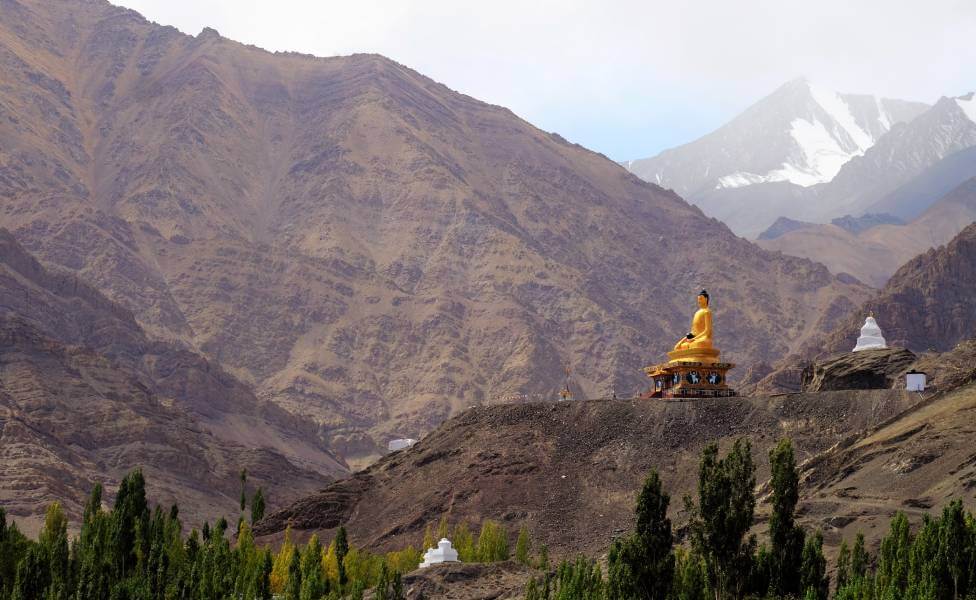
This trekking destination in Ladakh is a short trek that takes place over a period of just 3 days and is therefore also lovingly called the baby trek at Ladakh. Sham Valley trek begins from Likir, where before venturing into the cold valley of Ladakh, you can visit the Likir Monastery. The trek then continues by hiking through the villages of Yangthang, Hemis Shukpachan and Temisgam, after which the trek comes to a conclusion at Leh. The trek passes through numerous streams and villages of Ladakh, which provide a great opportunity for you to learn about the local culture and traditions of the people living in them. A trek with not that many ascents and descents, this trek can be undertaken by beginners and can be done most of the year. Apart from the scenic views of the freshwater streams, and the mighty mountain ranges of Ladakh, one can also view the monasteries at the villages and spot the apricot orchards at the Ang Village en route Temisgam.
Best Time for Trekking: June to September
Trekking Route: Leh – Likir – Yangthang – Hemis Shukpachan – Temisgam – Leh
Markha Valley Trek

The trek involves trekking among the villages on the river valley of the Markha River, within the Hemis National Park. This adventure trek in Ladakh provides beautiful views of Mount Kang Yatse and Mount Stok Kangri, along with the green Markha Village, standing out in the cold desert of Ladakh. During the trek one will have to cross high mountain passes like the Kongmaru La and the ice-cold Markha River. Markha Valley trek begins from Chilling but can also be approached from Stok and Spituk, but is discouraged due to the rapid gain of altitude with the latter. A much easier approach from Chilling, the next destination of the trek is Skiu where one can view the barley fields along the Markha River. If you wish to do so, you can also pay a visit to the monasteries that you come across on your trek. After visiting the village of Markha, trek to the green valley of Nimaling and later to Kongmaru La to get the perfect view of the Ladakh ranges and the Indus Valley. Trekking along the green landscape contrasting the cold desert, and crossing the thigh-high waters of the River Markha- not once but twice, will surely leave you with unforgettable memories.
Best Time for Trekking: June to September
Trekking Route: Leh – Chilling – Skiu – Markha – Hankar – Nimaling – Kongmaru La – Chogdo – Shang Sumdo – Leh
Chadar Trek

If walking on a river sounds interesting to you then this trek is for you. The Chadar Trek in Ladakh is a unique one that really meets the brief for an adventure trek and involves trekking on a frozen river. The word Chadar translates to Sheet, referring to the sheet of ice that is formed on the Zanskar River during the colder months of January and February. This week-long trek takes place in inhospitable conditions where temperatures go down to a scary -30°C! It is not a trek that involves many climbs and descents yet it is a difficult trek to accomplish. A popular trek in Ladakh, this trek is not meant for beginners, due to the skill and mental strength it takes. Not all patches of ice on the river are even, so it is upto you to figure out the safer ones based on the sound of the river flowing underneath the chadar. As you go on, you will soon be able to recognise the thicker and thinner parts of ice. En route, you may also be able to spot pugmarks that belong to the snow leopards, since they do reside in the vicinity. Due to a lack of homestays, you might have to take refuge for the night either at campsites or inside caves, like the locals.
Best Time for Trekking: Mid-January to February
Trekking Route: Leh – Chilling – Tilat Sumdo – Shingra Koma – Tibb – Nerak – Tibb – Shingra Koma – Tilat Sumdo – Chilling – Leh
Southern Zanskar Trek

The route for this trek is considered to be a rough and inhabitable one in Ladakh, but is also known for its various streams of water and monasteries that have made themselves home in the valley. The Southern Zanskar Trek requires more physical strength and stamina than your average trek. The trek starts from Darcha and ends at Keylong In Himachal Pradesh. Once you reach Ladakh, it is mandatory to acclimate yourself to the local weather conditions to prepare for the trek. During your trek, you might also be able to view the famed Phuktal Monastery near Purni. This monastery is known for being built around a natural cave and is truly a marvel. The Southern Zanskar Trek is one of the best treks to undertake in Ladakh and involves walking along the Kargyak and Tsarap rivers and camping under the night sky.
Best Time for Trekking: June to September
Trekking Route: Manali – Darcha – Zanskar Sumdo – Chumik Nakpo – Lukung – Kargyak – Purni – Phuktal Monastery – Purni – Tanze – High Camp – Phitse La – Tsarap Camp – Keylong – Manali
Darcha Padum Trek
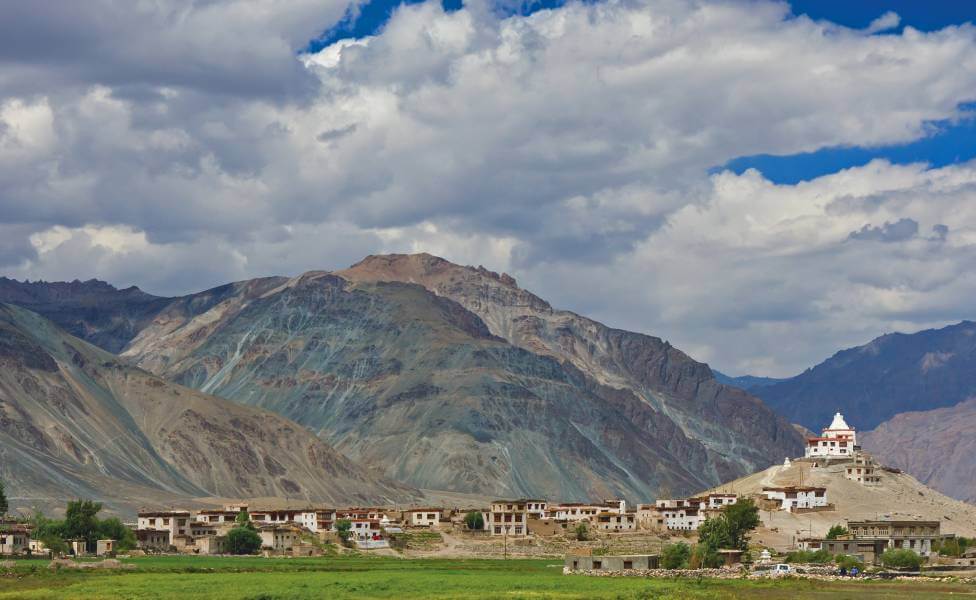
This adventure trek in Ladakh begins at Darcha in Himachal Pradesh. Starting from the Manali-Leh road, the Darcha Padum Trek then proceeds to Zanskar Sumdo at Ladakh. With a beautiful landscape of snow-capped mountains all around, the Darcha Padum Trek is the best trek in Ladakh for those who love arduous treks, since this trek involves a number of climbs across valleys, rivers and mountain passes, all at high altitudes. On this trek you will come across the villages of Kargyak and Teesta, the only places during the journey with satellite connections that will help you contact the outside world. During your trek you will also have the opportunity to cross the Zanskar River to reach your next campsite. Whereafter at Purni you can also visit the Phuktal Monastery of the Gelugpa tradition of Tibetan Buddhists, built within a cave. From there the trek again involves numerous ascents and descents which will lead you to the end of the trek at Padum, from where you can choose to go to Kargil or reach directly to Leh.
Best Time for Trekking: June to September
Trekking Route: Manali – Darcha – Zanskar Sumdo – Chumik Nakpo – Shingo La – Lakhang – Kargyak – Purni – Phuktal Monastery – Purni – Phibula – Raru – Padum – Kargil – Leh
Nubra Valley Trek

The Nubra Valley Trek starts at the Hunder village of the valley in Ladakh and involves walking along the Hunder River with an overnight camp. The trek involves trekking along yet another river, the Thanglasgo to reach the beautiful high-altitude river valley. The Nubra Valley Trek provides an opportunity to view the glacier lakes of Ladakh and cross some of the world’s highest mountain passes from where you can gaze at the beautiful mountain ranges of Karakoram, Ladakh, and Zanskar. Climbing to the north and then the south of the Lasermo La brings you to the end of the trek with a fulfilling descent to the village of Morobuk with a fascinating view of the Stok Kangri ranges.
Best Time for Trekking: June to September
Trekking Route: Leh – Hunder – Hunder Dok via Khardung La – Sumdo Dok – Thanglasgo Valley – Lasermo La base – Phyang Phu – Morobuk – Leh
What is the best time to go trekking in Ladakh?

The months of June to September are best for trekking in Ladakh since the average temperature in June averages around 2.9°C and 5°C in September. With Ladakh being a high-altitude region, temperatures can sometimes go as low as -26°C, making it uncomfortable for travel, especially for those who are unaccustomed to such harsh weather.
Things to Keep in Mind for Trekking & Hiking in Ladakh
- It is important that before undertaking any trek you take a few days to acclimatize to the weather of Ladakh, it is important to prevent any illness that comes with such a change in altitude.
- Trekking can be taxing on your legs and body if you are not used to such an activity. Therefore, it is advisable to regularly exercise, especially cardio and stretching exercises so that you are able to trek without much problem.
- Those who wish to undertake the Chadar Trek can only do so after getting cleared by the Tourism & Culture Department of Leh, Ladakh, according to which trekkers are required to mandatorily spend 2 days in Ladakh to acclimatize, followed by a medical checkup, and have to present an altitude and trekking insurance for the trek. If cleared they would get a permit by the Tourist Information Center at Leh, only then can they proceed with the trek.
- For the trek, carry a pair of trekking shoes, extra clothes and thermals, rain jacket/poncho, sunglasses, balaclava, gloves, headlamp/torch, trekking pole, basic toiletries, a mini first-aid kid, and remember to layer yourself well for the cold weather. Depending on the kind of trekking route you choose, you might also have to carry a sleeping bag as well.
Trekking can be so much fun, especially in Ladakh with bone-chilling temperatures that can even freeze a river. But as fun as it can be it is also important to remember that trekking does carry with it, its own set of risks which can be taken care of by taking precautions and always being alert. Trek with an experienced guide; carry adequate warm clothes with you, and follow a fitness regime well in advance of your trek and you should be good to go. Let Ladakh be the place for your next trekking adventure.
Like & Follow our social media accounts at Twitter, Facebook, Linkedin & Instagram for getting the latest updates & offers on holiday packages.
Disclaimer: We do not take credit for some of the licenced paid images used in our blogs, whether from Google Images, Fotolia & Shutterstock. All such images are the copyrights of their respective owners and we try to provide credit for them wherever we can. If, however, any copyright image has been used on our blog, the concerned person can either mail us directly to remove the image or provide credit to whomsoever the image may belong to.
Frequently Asked Questions
How physically demanding are the treks in Ladakh?
Trekking in Ladakh can include ascents and descents depending on the trek route you decide to take, and can be quite taxing on the legs. Even the simpler treks require you to walk long distances on rugged terrain for which cardio exercises are essential to keep one prepared for the trek. Apart from these, trekking at high altitudes can also cause altitude sickness and can be discouraging. One way to prevent this would be to spend a few days prior to your trek acclimatizing yourself to the weather of Ladakh.
Do we need any prior trekking experience for Ladakh?
The Sham Valley Trek can be undertaken even by beginners. As for the other treks, it would be ideal to have some kind of trekking experience beforehand.
What trekking equipment is essential for Ladakh?
Trekking equipment that is essential for Ladakh include:
- Trekking shoes
- Headlamp/Torch
- Trekking pole
- Swiss knife
- Water Purification tablets
- Waterproof pants
- Sleeping bag
How do you prepare for the high altitudes of Ladakh treks?
Trekking at high altitudes can also cause altitude sickness and can be discouraging. One way to prevent this would be to spend a few days prior to your trek acclimatizing yourself to the weather of Ladakh.
Are there any health precautions we should take before trekking in Ladakh?
Before trekking to Ladakh, it is ideal that you regularly exercise especially cardio and stretching exercises so that you are able to trek without much problem.
What kind of accommodations is available during the treks?
Since many treks involve crossing villages, these villages have come up with homestays to cater to trekkers and are the most viable accommodation option for your tour in Ladakh.
Are there any permits required for trekking in Ladakh?
You would require an Inner Line Permit to travel to different parts of Ladakh, details of which and the application can be done online at https://www.lahdclehpermit.in/
How do you deal with altitude sickness during the trek?
To minimize altitude sickness, it is necessary to acclimate yourself with high altitude weather at least for a couple of days prior to the trek. Apart from that it is advisable to contact your general practitioner and ask them about medications to prevent and deal with altitude sickness.
Can I trek solo, or do I need to join a group?
Solo treks in Ladakh should ideally be only done in routes which require you to cross villages. In cases of trekking routes that are at more isolated locations, it is advisable to either trek with an experienced guide or join a group.
What should we pack for a Ladakh trek?
For the trek, carry a pair of trekking shoes, extra clothes and thermals, rain jacket/poncho, sunscreen, sunglasses, balaclava, gloves, headlamp/torch, trekking pole, basic toiletries, a mini first-aid kid, and remember to layer yourself well for the cold weather. Depending on the kind of trekking route you choose, you might also have to carry a sleeping bag as well.
Is trekking in Ladakh safe for solo female trekkers?
Yes, Ladakh is safe for solo female trekkers and can turn out to be a fun experience.
About the author
Sharon is a curious human who is always eager to learn about the history and mysteries of places, which she then brings to life with her words. A travel writer at Tour My India, her bucket list keeps expanding every day in search of places to explore.

 +91-9212777225
+91-9212777225 Plan Your trip
Plan Your trip








